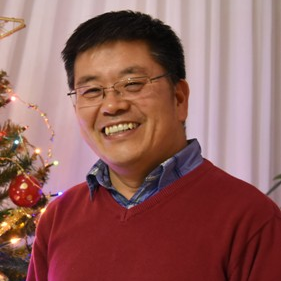Silicon Nanowires and Their Applications
A special issue of Applied Sciences (ISSN 2076-3417). This special issue belongs to the section "Nanotechnology and Applied Nanosciences".
Deadline for manuscript submissions: closed (30 June 2019) | Viewed by 45135
Special Issue Editors
Interests: semiconductor devices; electronic materials
Interests: bottom-up synthesis and properties of nanostructures; advanced nanowire device fabrication; nanowire sensors & electron devices; nanostructured semiconductor surfaces for photocatalytic applications
Special Issue Information
Dear Colleagues,
We invite you to contribute to a Special Issue of the journal Applied Sciences, "Silicon Nanowires and Their Applications", which aims to present recent advances in the investigation silicon nanowires (SiNWs) and SiNW-based devices including also fabrication strategies, SiNW characterization, and theoretical studies.
SiNWs provide a unique set of material and morphological properties comprising 1D transport phenomena and a high surface to volume ratio that enable a broad spectrum of applications. The enhanced electrostatics in SiNW devices offers for instance the possibility to scale field effect transistors (FETs) down to <10 nm following Moor's law. In addition, TFETs, which are based on band to band tunnelling and thus break the subthreshold slope limit of 60 mV/dec at 300 K in MOSFETs, can be significantly improved by utilizing wrapped gate SiNW configurations. Multiple applications were also demonstrated in the fields of chemical, biochemical and biological sensing ranging from ion-sensitive FETs and vertical electrode arrays to nanoscale injectable probes. SiNWs can be furthermore implemented in photonic and quantum computing devices. The compatibility with well-established CMOS microfabrication technologies supports here not only the overall device assembly but enables also possibilities of a simultaneous integration of photonics and electronics, or qubits and traditional control devices/circuits on the same platform. For thermo-electric applications, SiNWs promise significant enhancements in thermoelectric efficiency with low thermal conductivity. Furthermore, SiNWs show advantages in energy generation and storage: for example, to improve the properties of Lithium-ion battery anodes and solar cells. Other aspects and applications of SiNWs, besides the examples listed above, are also very welcome.
Prof. Qing-Tai Zhao
Prof. Steffen Strehle
Guest Editors
Manuscript Submission Information
Manuscripts should be submitted online at www.mdpi.com by registering and logging in to this website. Once you are registered, click here to go to the submission form. Manuscripts can be submitted until the deadline. All submissions that pass pre-check are peer-reviewed. Accepted papers will be published continuously in the journal (as soon as accepted) and will be listed together on the special issue website. Research articles, review articles as well as short communications are invited. For planned papers, a title and short abstract (about 100 words) can be sent to the Editorial Office for announcement on this website.
Submitted manuscripts should not have been published previously, nor be under consideration for publication elsewhere (except conference proceedings papers). All manuscripts are thoroughly refereed through a single-blind peer-review process. A guide for authors and other relevant information for submission of manuscripts is available on the Instructions for Authors page. Applied Sciences is an international peer-reviewed open access semimonthly journal published by MDPI.
Please visit the Instructions for Authors page before submitting a manuscript. The Article Processing Charge (APC) for publication in this open access journal is 2400 CHF (Swiss Francs). Submitted papers should be well formatted and use good English. Authors may use MDPI's English editing service prior to publication or during author revisions.
Keywords
-
Si nanowire
-
1D transport
-
Electrostatics
-
Field effect transistor
-
Fabrication
-
Quantum computing
-
Sensor
-
Thermo-electrics
-
Battery
-
Photovoltaics






